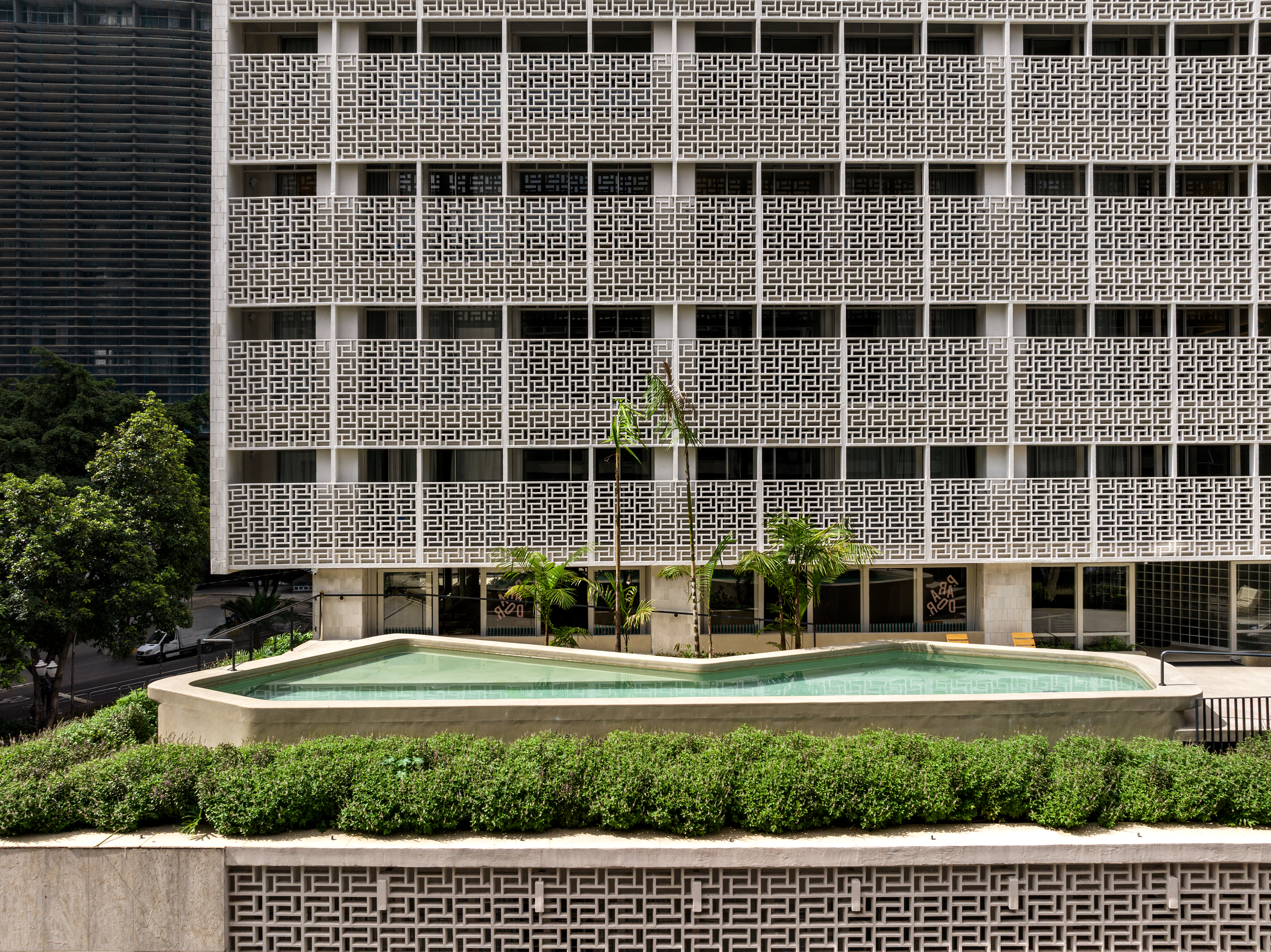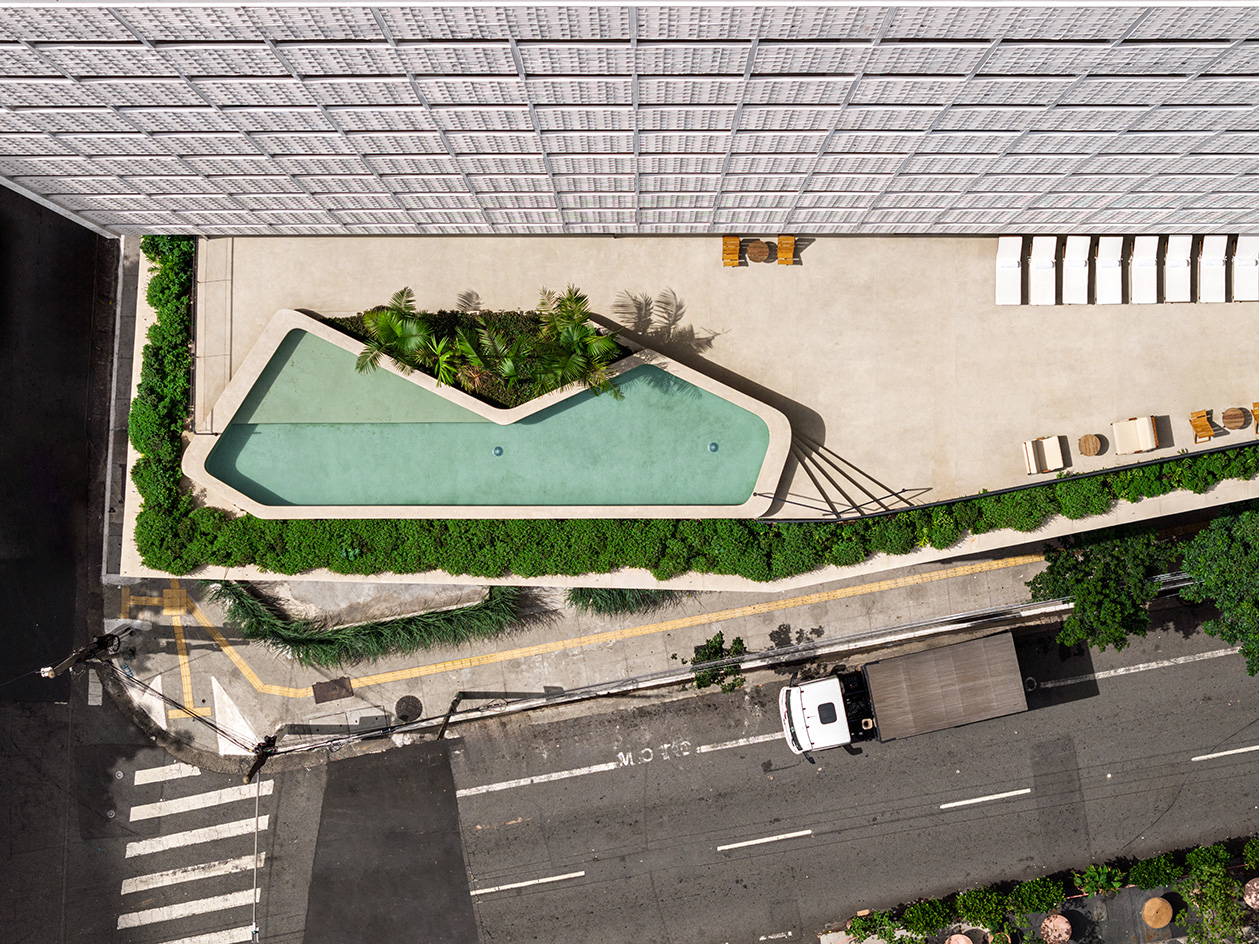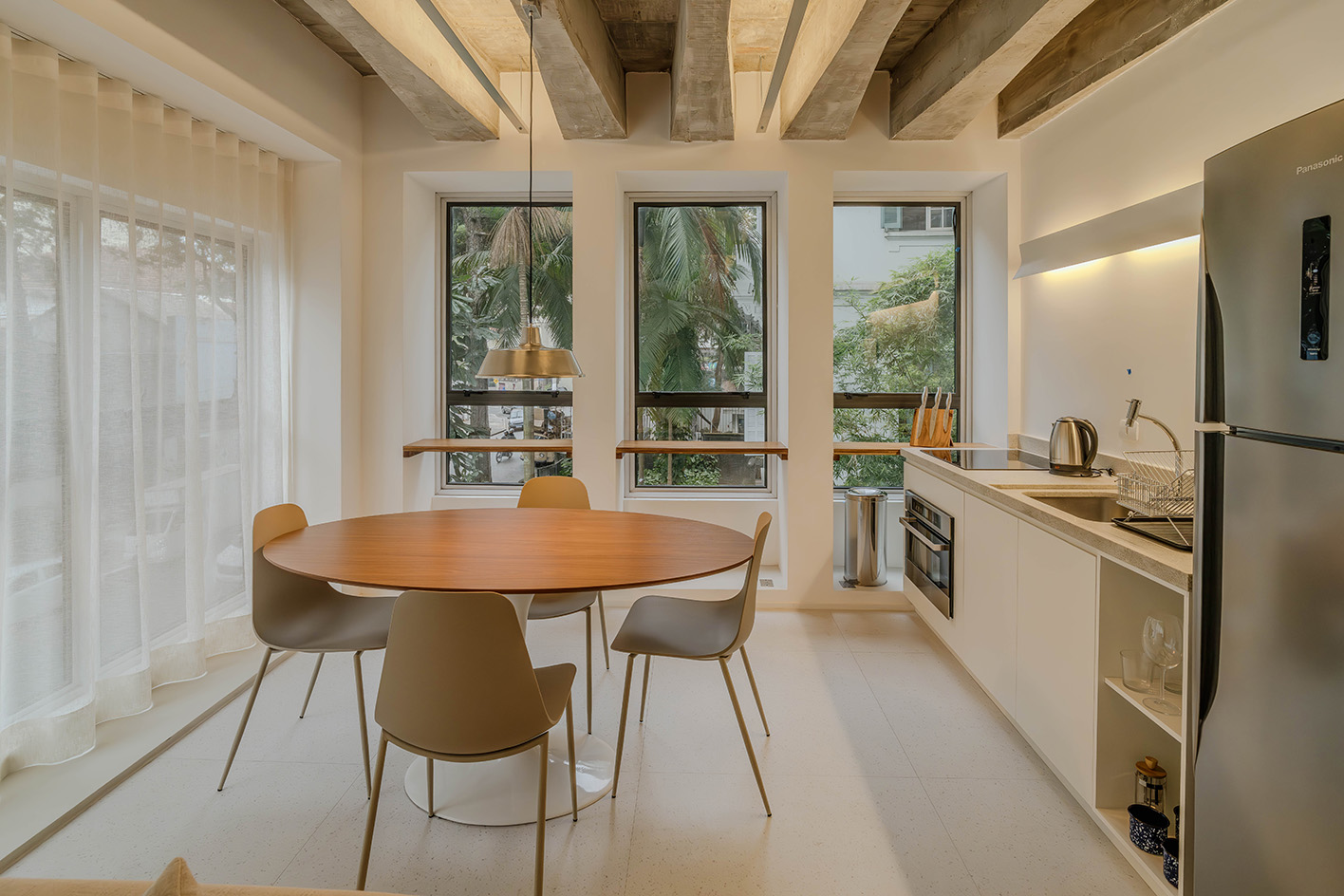
Something special is happening in downtown São Paulo. In post-pandemic Vila Buarque, one of the Brazilian metropolis' central neighbourhoods, some of São Paulo’s most iconic landmarks are receiving the sort of facelift that has revived the city’s love affair with the 1950s and 1960s, Brazil’s golden age of music, football and architecture.
At the centre of this urban revival is a talented team of architects, handpicked by trendsetting property developer Planta Inc, which is on a mission to restore the city’s midcentury modernist architecture icons to their previous pomp.

Planta Inc: restoring São Paulo’s modernist heritage
From their minimalist architecture offices on the 25th floor of the iconic, Franz Heep-designed skyscraper, Edifico Italia, Planta’s co-founders, landscape artist Guil Blanche and designer Aline Prado, can point to a cluster of six buildings they have refurbished in less than five years.
CEO Blanche labels Planta’s particular philosophy 'urban recycling mesmerism'. It is a kind of inner-city acupuncture undertaken together with a team of architectural talent capable of conjuring up the animal magnetism first propounded by German physician Franz Mesmer in the 18th century and the healing technique he developed: 'Mesmerism'.

According to its inventor, Mesmerism is the existence of an invisible natural force possessed by all living things, including humans, animals, and vegetables. Mesmer claimed that the force could have physical effects, including healing.
There are indisputable signs of a natural force in the beating heart of São Paulo, a megalopolis of more than 22 million inhabitants. Planta’s pilot scheme of half a dozen offices converted into apartments and studio rentals with restaurants and retail on the ground floor, has breathed new life into the Vila Buarque and Republica neighbourhoods, bringing a hip crowd of creatives to live, work and play in the city centre.

Things are looking up in Vila Buarque
The pride and joy of Planta’s first batch of 'mesmerising' buildings is Oswaldo Bratke’s Edificio Renata Sampaio Ferreira. Listed by city planners in 2012, the cobogo-fronted workspace was transformed from neglected offices next to one of the city’s late-night counter-cultural hangouts, the salubrious nightclub, Love Story, into an urban basecamp from which lovers of Brazilian architecture can easily explore the tropical modernist gems of downtown São Paulo.
Nestled in-between buildings by Oscar Niemeyer (Copan Building and Edifico Eiffel) and Rino Levi (IAB Sao Paulo headquarters), the project by Metro Arquitetos presented the task of painstakingly restoring Bratke’s 1956 masterpiece. It also introduced a pool and restaurant area that has transformed the way people enjoy the building and the surrounding neighbourhood.

Working closely with Prado, Planta’s creative director, Metro Arquitectos has created its own line of interior objects, lighting, fixtures, fittings and furniture to max out Planta’s devilish attention to detail throughout.
Gustavo Cedroni, the architecture studio's founder, says: 'There are other companies working on retrofit projects in São Paulo, but Planta really has the vision of bringing the city back to its former glory, of celebrating these wonderful buildings.' Working with retrofits of buildings originally constructed to very high standards not only makes sense from an environmental point of view but from a moral and human standpoint too, he explains.

Restoring the beauty of São Paulo’s post-war buildings, which are at the core of the city’s rich European heritage, is central to Planta’s philosophy.
'São Paulo has a very interesting and specific urban landscape in its central area,' says Blanche. 'It was mainly built right after the Second World War when great architects from Europe fled to Brazil and built some amazing modern buildings. We aim to occupy these beautiful office buildings with residences bringing more density to the central part of the city. We have three main ideas: one, building homes with less environmental impact; two, creating a more efficient city where people live close to the places they work; and three, bringing life back to these amazing buildings.'
Other structures he openly admires throughout the city include the old Hilton Hotel Building (Ipiranga Avenue, 165), Edifício Unibanco (Eusébio Matoso Avenue, 891), Maksoud Hotel (São Carlos do Pinhal, 424), Galeria Metropole w/ Edifício Metropolitano (Avenue São Luis,187) and Edifício Sumitomo (Avenue Paulista, 949).

Planta’s post-pandemic resonance
While Planta’s pioneering approach was interrupted by the pandemic, it was ultimately reinforced by the disruption, which accelerated the need for offices available in a more mixed-use capacity in the centre of the city. It has also prompted people to reimagine how they want to inhabit urban jungles like São Paulo, says Blanche.
'The pandemic heightened, for a very short period, every aspect of human life. It deeply changed the way we relate to each other, to risk-taking, and of course to cities. Now everything seems normal like before, but it is different,' he says.

'We value contact with nature more, and we treat living in cities as a way of life. Beyond the necessity, we love and hate it. We are all dedicated to making it better but we are also looking for strategies to stay away for longer periods of time. Planta is a consequence of that moment because it resonates with our previous thesis of recycling old and sub-utilised buildings.'
Working with some of São Paulo’s most talented architects on this shared mission has been a big part of Planta’s success. As well as Metro, Planta has worked with MMBB Arquitetos, Vapor Arquitetura and Andre Vainer Architects.

The team’s mesmerising (pun intended) success in attracting life back into the city's heart has been rewarded with the successful sale of five buildings to Canadian multinational Brookfield Asset Management in September 2024. As well as 95 per cent occupancy rates on Planta’s portfolio, the world’s largest impact investor was attracted to the environmental benefits of the retrofitted buildings that result in 50-75 per cent less carbon than constructing a new building from scratch.
São Paulo has more towers over 35m in height than any other city in the world, and comprises more than 40,000 buildings with a similar profile to those converted by Planta, so there’s plenty to work with. Brookfield’s funds have provided Planta with the resources needed to embark on the next phase of its ambitions to transform the city.

'We try to create a vision, a utopia. A city that is dense, with diverse people walking on beautiful sidewalks with trees and green areas everywhere, with clean water for people to use during the summer, people going in and out of good coffee shops, with programmes for every taste,' says Blanche.
City Hall is also getting on board – thanks, largely, to the success of Planta and other ambitious urban regeneration projects like Cidade Matarazzo (a listed former hospital transformed into a mixed-use complex). It has adopted new regulations that offer tax breaks to developers willing to favour recycling over new-builds.

'Brookfield is a reference for capitalists all over the world. When they bought our portfolio, they validated the quality of our retrofits, but also they indicated that there is a financial opportunity in investments that could be seen as creative and utopian. Hopefully, it will reduce the ignorance of the Brazilian market with innovation,' says Blanche.
This success has also given Planta the confidence to explore opportunities further afield, with eyes on opportunities in Rio de Janeiro and New York.

Building an A- and B-team of Brazilian architects
For its next batch of buildings, Planta is adopting a similar approach, selecting architects that have: 'respect for the use of materials, in a sense that they use only what is necessary, because that is environmentally correct; a will to create a vibrant city; respect for the past; a passion for what is possible in the future', says Blanche.
'Every building has its own "code". The combination of the architect and the existing building has to work with this code. We study the structure and each architect's body of work. Then we have a committee that votes, and usually, we have the majority voting for the same office for each commission. It's very impressive how the building itself dictates the architect,' he says.

Planta's next building, Edifcio Margarida, due for completion early in 2025, is also being refurbished by Metro Arquitectos. Located on the same street as Renata, Margarida adopts a similar approach to past projects by the developer, converting offices into short-stay apartments with the introduction of a spa and pool to entice visitors to spend more time playing than working. The successful Planta recipe is about to spring into action once more.








